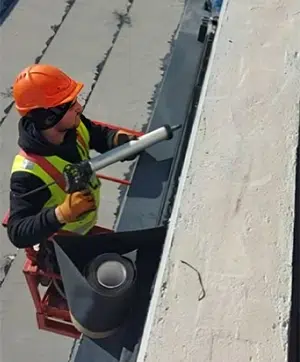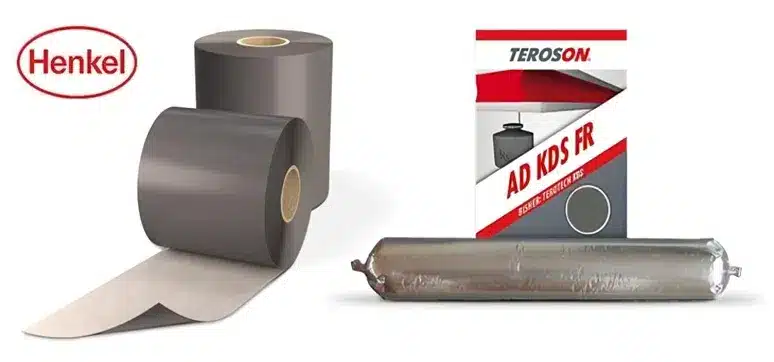If you are involved in the design and construction of building façades, you may be aware of the importance of sealing around windows and façade interfaces. These are the areas where the façade elements, such as windows, doors, panels, and cladding, meet and form gaps and joints. These gaps and joints are vulnerable to water ingress and air leakage, which can damage the building envelope and affect its thermal performance, energy efficiency, indoor air quality, and fire safety.
To seal these gaps and joints effectively, you need to use the right membranes that are compliant with the latest regulations and performance standards, and that are compatible with the substrate and the cladding. You also need to install them correctly and follow the best practices for corner sealing.
However, finding and using the right membranes for window or façade sealing can be challenging, especially with the recent changes in regulations and standards. You may be wondering how to ensure that your membranes meet the minimum fire classification of Euroclass B-s3,d0, or better, according to Regulation 7 and Approved Document B.
You may also be wondering how to test the water and air tightness of your membranes, according to EN13984 and EN1928. In this article, I will share some insights and tips on how to choose and use the right membranes for your projects.
What is the function of membranes for façade or building envelope sealing?
Membranes used for façade sealing are thin sheets of material that are used to seal the gaps and joints between façade elements. They have two main functions:
- To create water and airtight seals around windows and interfaces, preventing water ingress and air leakage, which can damage the building envelope and affect its thermal performance.
- To provide a vapour-permeable protective layer behind cladding, allowing moisture vapour to escape from the building envelope while preventing external moisture from entering.
By using membranes for façade sealing, you can protect your building from external elements, improve its energy efficiency and indoor air quality, and contribute to its fire safety.
What are the regulatory requirements and performance standards for membranes for façades?
Membranes for façade sealing are subject to regulatory requirements and performance standards that establish minimum criteria for their fire and water resistance.
The regulatory requirements are mainly governed by Regulation 7 and Approved Document B, which apply to façade materials used on relevant buildings, such as those that contain one or more dwellings. Regulation 7 states: …
Building work shall be carried out so that materials which become part of an external wall, or specified attachment, of a relevant building, are of European Classification A2- s1, d0 or Class A1….. Some products are excluded from this requirement, including membranes; however, this only excludes membranes from the requirement for class A2-s1, d0, or class A1 and not from fire classification.
This can be verified by looking at Approved Document B, which states: 10.21 Particular attention is drawn to the following points; a) Membranes used as part of the external wall construction above ground level should achieve a minimum of class B-s3, d0.
Therefore, these regulations require that membranes have a minimum fire classification of Euroclass B-s3,d0, or better, according to the classification standard EN 13501-1.
The performance standards are mainly governed by EN13984 and EN1928, which apply to membranes for façade interfaces. EN13984 specifies the performance requirements for membranes, such as tensile strength, elongation, tear resistance, and resistance to aging. EN1928 specifies the methods for testing the watertightness of membranes.
When choosing membranes for window and façade sealing, you need to consider both the fire classification and the performance standards and ensure that the membranes meet or exceed the minimum criteria. You also need to check the manufacturer’s specifications and certifications to verify the compliance and quality of the membranes.]
How to install membranes for façade sealing correctly and effectively?

Installing membranes for façade sealing correctly and effectively is crucial for ensuring their functionality and durability. Here are some tips and best practices for installing membranes for façade sealing:
- Ensure compatibility between the membrane and the substrate or the cladding. Use compatible materials and accessories, such as primers, adhesives, and sealants, to avoid any chemical reactions or mechanical failures.
- Apply primer on porous surfaces, such as concrete or brick, to improve the adhesion and bonding of the membrane. Follow the manufacturer’s instructions for the primer application and drying time.
- Apply paste adhesive evenly on the membrane and the substrate. Avoid applying too much or too little adhesive, as this can affect the water and airtightness of the seal.
- Bond the membrane firmly to the substrate or the cladding, using a hand roller. Ensure that there are no wrinkles, bubbles, or gaps in the membrane and that the membrane is aligned and levelled.
- Pay attention to the corner sealing as these are critical aspects for ensuring a watertight seal. Cut and fold the membrane to create neat and tight corners and avoid piercing the membrane unnecessarily.
How to future-proof your projects with membranes for façade sealing?
As regulations and standards for façade materials become more stringent over time, you may want to consider future-proofing your projects with membranes for façade sealing that exceed the current requirements. This way, you can minimise the need for often expensive retrofits and ensure the long-term safety and performance of your buildings.
One way to future-proof your projects is to use membranes that have better performance ratings than the minimum required, such as higher tensile strength, elongation, tear resistance, and resistance to aging. These membranes are more durable and resilient and can withstand harsh environmental conditions and mechanical stresses.
Where to find compliant and reliable membranes for façade sealing?
Finding compliant and reliable membranes for façade sealing can be challenging, especially with the changes in regulations and standards. You need to ensure that the membranes you choose are certified and tested according to the relevant criteria and that they are available and accessible in the market.
Conclusion
Choosing and using the right membranes for sealing around windows and façade interfaces is a vital aspect of building design and construction. It requires careful consideration of the regulatory requirements and performance standards, as well as the installation methods and techniques. By following the tips and best practices shared in this article, you can ensure that your membranes are compliant, functional, and durable and that your buildings are safe, efficient, and attractive.














